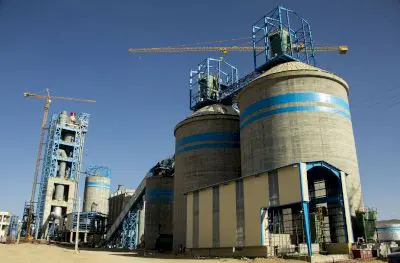Growth of cement-based productsFollowing the change in cement technology, the production of cement-based products will also increase and the concrete industry with the production of new products such as lightweight concrete, self-healing concrete, permeable concrete, thermal insulation concrete, light-transmitting concrete, transparent concrete, Carbon-absorbent concrete and electric storage concrete will definitely experience a new era

High-tech Cement and clinker refer to advanced and innovative materials used in the construction industry that offer improved performance, durability, and sustainability compared to traditional cement and clinker. These materials are developed through technological advancements and research to meet the evolving needs of the construction sector. Blended cements are a type of high-tech cement that incorporate supplementary cementitious materials (SCMs) such as fly ash, slag, silica fume, or limestone. These materials are added to the cement formulation to enhance specific properties such as strength, durability, workability, and sustainability. Blended cements offer improved performance and reduced environmental impact compared to ordinary Portland cement (OPC).
Low-carbon cement is another type of high-tech cement that aims to reduce carbon dioxide emissions associated with cement production. These cements utilize alternative binders or modified clinker formulations with reduced clinker content, resulting in lower carbon footprints. Examples include calcium sulfoaluminate (CSA) cement and belite-rich calcium sulfoaluminate (BCSA) cement. High-tech clinker involves the development of alternative clinker technologies that aim to reduce the environmental impact of clinker production. These technologies focus on reducing the amount of clinker or modifying its composition to lower carbon dioxide emissions. For instance, researchers are exploring the use of novel binders, such as geopolymers or alkali-activated materials, as alternatives to traditional clinker-based cement.
High-tech clinker production may involve the integration of carbon capture and utilization technologies. These technologies capture carbon dioxide emissions from the clinker production process and utilize the captured CO2 for various purposes, such as manufacturing Construction materials or storing it underground. CCU technologies have the potential to significantly reduce the carbon footprint of clinker production. The development of high-tech cement and clinker is driven by the need for more sustainable and environmentally friendly construction materials. These materials offer advantages such as reduced greenhouse gas emissions, improved energy efficiency, enhanced durability, and tailored properties to meet specific construction requirements. By leveraging technological advancements and innovation, the industry aims to achieve a balance between performance, economic viability, and environmental sustainability in cement and clinker production.
Advances in the cement industry will eventually lead to the production of high-tech cement and clinker, and cement plants using emerging technologies such as solar/electric heating systems, carbon-absorbing technologies, and carbon-free alternative fuels, recycled materials and optimal crushing technologies can provide cements with higher strength and durability along with cost-effective production. Following the change in cement technology, the production of cement-based products will also increase and the concrete industry with the production of new products such as lightweight concrete, self-healing concrete, permeable concrete, thermal insulation concrete, light-transmitting concrete, transparent concrete, Carbon-absorbent concrete and electric storage concrete will definitely experience a new era.
Factors such as overcapacity in a number of countries in the field of cement industry, demographic changes, including an increase in the elderly population in the coming years, changing the situation of developing and developed countries indicate that the demand for cement by the middle of the present century will face a reduction of 30 to 60 percent. With the development of many developing countries, projects around the world will move towards modernization and reconstruction. In the meantime, considering the possible conditions, a number of cement factories in the world will disappear in history or will have to change their application.





